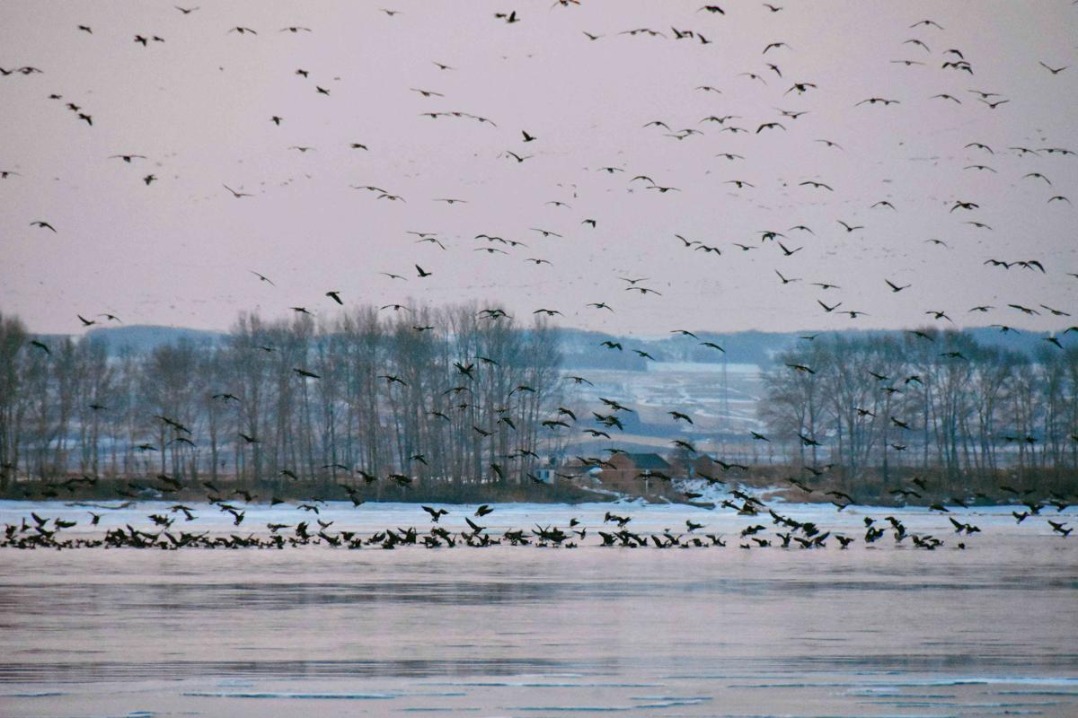Zones aim to integrate culture, tourism


On Dec 18, the Ministry of Culture and Tourism, the Ministry of Natural Resources and the Ministry of Housing and Urban-Rural Development announced a plan to build national demonstration zones to further boost the integration of the cultural and tourism industries.
Fifty cities, city districts and counties from around the nation have been selected as potential zones. They include the Dongcheng and Chaoyang districts of Beijing; the Xincheng district of Hohhot, Inner Mongolia autonomous region; the Xuhui and Songjiang districts of Shanghai; and in Jiangsu province, the Xuanwu district of Nanjing and the Gusu district of Suzhou.
Construction has either commenced or will begin soon in those areas. Once work is complete in an area, inspectors will visit within three years to determine if it is suitable to become an official demonstration zone.
The three ministries called on provincial-level authorities to strengthen collaboration on the construction work of the demonstration zones, formulate and introduce supporting measures at the provincial level, enhance supervision and guidance, and regularly evaluate the construction results.
According to the notice, the prefecture-level governments in charge of those zones should implement related policies, provide financial support, guide the reasonable acquisition of resources, and come up with solutions to major problems encountered during construction.
Local governments in charge of the construction projects are also urged to establish and improve the work mechanism, implement various construction measures and make good use of financial support policies.
The ministries stressed that related governments should ensure those regions can play a leading role in the integration efforts and positively influence surrounding areas.
The demonstration zones will play a leading role in the deep and high-quality development of the integration of culture and tourism in China, said Song Yangyang, deputy director of the Institute of Creative Industries Technology at Renmin University of China.
"They will be characterized by rich cultural heritage, abundant tourism resources, the deep integration and complementary collaboration of industrial chains, and sound development mechanisms," Song said.
He added that the demonstration zones will significantly influence how work is done on future projects and drive support for government policies, industrial development and the innovative integration of various types of businesses.
"This will promote the flourishing development of new cultural and tourism formats, accelerate the deepening of supply-side structural reforms and drive industrial transformation and upgrading," he said.
According to the authorities, the 50 selected areas all have a solid foundation for industrial integration and have important, distinctive features that can further promote integrated development of the cultural and tourism industries in their areas.
For example, Wuyishan city in Fujian province, Yangshuo county in the Guangxi Zhuang autonomous region and Dunhuang in Gansu province have unique advantages in traditional tourism for their abundant folk culture, revolutionary history or natural resources.
Those places are urged to promote their cultural products and services as part of their tourism development, leveraging tourism as a channel to make their cultures stand out more.
Meanwhile, areas that have already seen relatively large-scale development, including Qian'an city in Hebei province and the Chancheng and Nanhai districts in Foshan, Guangdong province, have been advised by authorities to promote the deep integration of the cultural and tourism industries using modern services and agriculture and advanced manufacturing, connecting upstream and downstream industrial chains to further improve the cultural and tourism product supply system.
Elsewhere, the Gusu district in Suzhou, the Qingyang and Pidu districts in Chengdu in Sichuan province, and Qujiang New District in Xi'an, Shaanxi province, have been called on to develop tourism performances, Chinese-style theme parks, cultural festivals and exhibition tourism.
Song said two cross-provincial zones have made the list.
One involves Shanghai's Qingpu district, Wujiang district in Suzhou and Jiashan county in Zhejiang province.
" (They) can leverage the solid accumulation of cultural heritage, tourism resources and customers from surrounding areas, and explore the coordinated development of cultural and tourism industries in the pan-Dianshan Lake area (at the boundary between Shanghai and Jiangsu)," Song said.
The other covers Pingjiang county in Hunan province, Xiushui county in Jiangxi province and Tongcheng county in Hubei province.
"Strategically planning cross-regional clusters for the high-quality development of cultural and tourism industries will facilitate the free flow of cultural and tourism resources across provincial regions, and enhance the collaborative and shared development levels of cultural and tourism industries," Song said.
In recent years, new integrated culture and tourism businesses have played an increasingly evident role in driving the economy, as Chinese travelers are growing more fond of cultural experiences for leisure, experts said.
According to the China Tourism Academy's recent forecast for this year, the number of domestic tourist visits will exceed 6 billion, and domestic tourism revenue will surpass 6 trillion yuan ($837.9 billion).
The Chinese government has picked up on the trend and has unveiled a string of policies in support of cultural and tourism integration.
Since the 18th National Congress of the Communist Party of China in 2012, the central government has attached great importance to cultural and tourism work.
In August 2019, the General Office of the State Council, China's Cabinet, issued the "Opinions on further stimulating the potential of cultural and tourism consumption", which proposed the plan to build national demonstration zones for the integrated development of the cultural and tourism industries.
In September last year, the office went on to issue "Measures to unleash the potential of tourism consumption and promote the high-quality development of tourism" as a further means to meet the development goal.
"Frequent introduction of such policies in various regions … is aimed at promoting the deep integration of culture and tourism, innovating the supply of tourism products, enhancing the quality of tourism products and promoting the recovery and accelerated development of the tourism industry," Wang Ping, a law professor with the College of Arts and Science at Beijing Union University, told China Tourism News.
"It also reflects the requirements of expanding domestic demand and deepening supply-side structural reform," Wang said.
He said deep integration of culture and tourism enhances the role culture plays in tourism and diversifies cultural development to meet travelers' needs.




